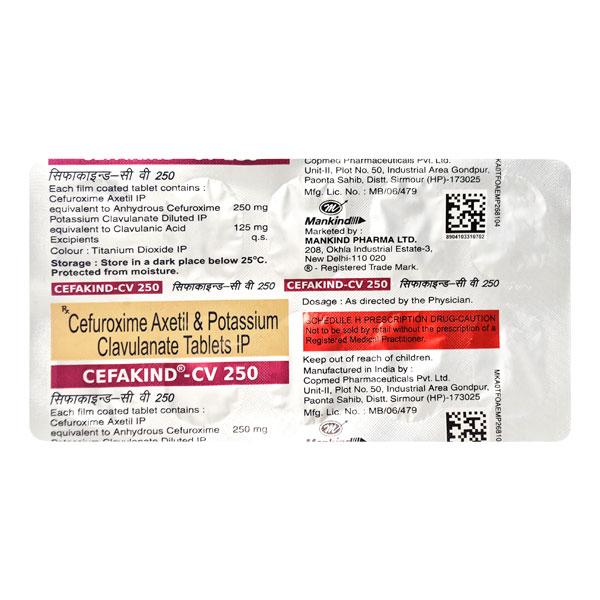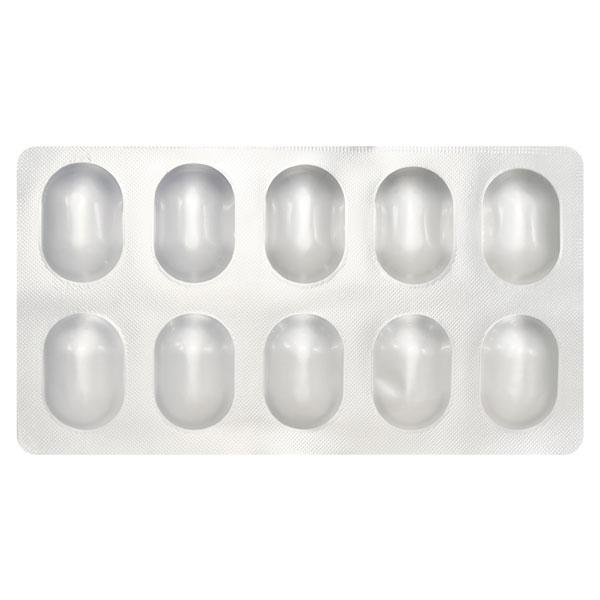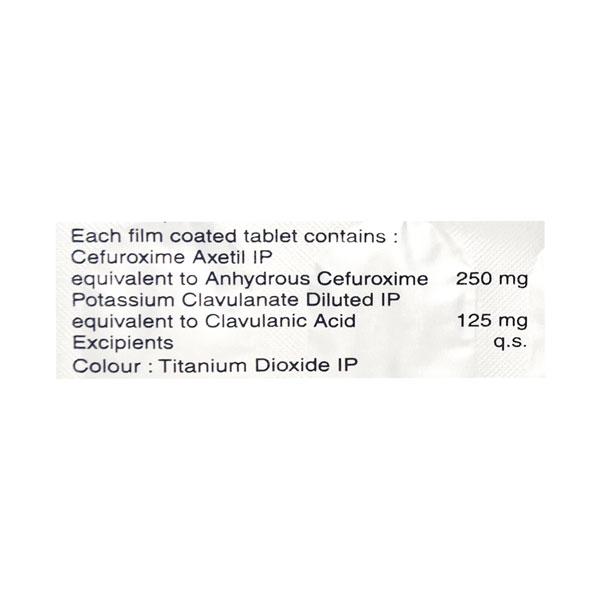Cefakind CV 250mg Tablet 10'S
Cefakind CV 250mg Tablet 10'S
Couldn't load pickup availability
CEFAKIND CV 250MG TABLET is a combination of Cefuroxime and Clavulanic acid, which belong to the group of medicines called Antibiotics and Beta-lactamase inhibitors, respectively. It manages various types of bacterial infections like pharyngitis and/or tonsillitis, acute bacterial otitis media, acute bacterial maxillary sinusitis, lower respiratory tract infections including pneumonia, acute bacterial exacerbations of chronic bronchitis and secondary bacterial infections of acute bronchitis, skin and skin structure infections, urinary tract infections, bone and joint infections, gonorrhoea (uncomplicated and disseminated gonococcal infections), early Lyme disease (erythema migrans), septicemia, meningitis, and in switch therapy (injectable to oral) after surgery when the patient's condition is improved.
Before taking CEFAKIND CV 250MG TABLET, inform your doctor if you have a history of colitis, liver problems, or kidney problems. CEFAKIND CV 250MG TABLET should be used with caution in patients who are penicillin sensitive. CEFAKIND CV 250MG TABLET should be used with caution in pregnant women and is not recommended for use in breastfeeding women.
CEFAKIND CV 250MG TABLET is not recommended for use in children under the age of three months. The most common side effects of taking CEFAKIND CV 250MG TABLET are nausea, vomiting, diarrhea, abdominal discomfort, or pain. Ask your doctor for advice if any of these side effects worsen or don’t improve.
Uses Of CEFAKIND CV 250MG TABLET
CEFAKIND CV 250MG TABLET is used for the management of various bacterial infections such as:
Pharyngitis and/or tonsillitis
Acute bacterial otitis media
Acute bacterial maxillary sinusitis
Lower respiratory tract infections, including pneumonia
Acute bacterial exacerbations of chronic bronchitis and secondary bacterial infections of acute bronchitis
Skin and skin structure infections
Urinary tract infections
Bone and joint infections
Gonorrhoea (uncomplicated and disseminated gonococcal infections)
Early Lyme disease (erythema migrans)
Septicemia
Meningitis
Switch therapy (injectable to oral) after surgery when the patient’s condition is improved






